SSB interview is divided into 2 stages, out of which the first stage is the Screening Test – which consists of the Officer Intelligence Rating Test (OIR Test) and Picture Perception & Discussion Test (PPDT). If the candidate is well prepared for verbal and non-verbal tests – which is asked in OIR Test, then he can comfortably clear the same. But PPDT is one of the Trickiest Parts, but in this article, we will try to answer your question “How to write the BEST PPDT story”
Day of Screening is one of the most important days of the SSB Interview, as it decides whether you will stay for the next round of interviews or not. As we know, PPDT is the deciding factor on Day 1 of your SSB – let us know “How to write the BEST PPDT stories in SSB Interview”.
In this article, we will cover all the aspects of PPDT, i.e. Story Writing, Individual Story Narration, and Group Discussion – and how to give your best in every field of PPDT.
What is Picture Perception & Discussion Test (PPDT)
- Picture perception and discussion test or also called PPDT is one test conducted as a part of the Screening Test in the SSB Interview.
- PPDT test is conducted in a group. For this, the complete batch will be divided into groups of 24 to 30 candidates.
- The PPDT can be further divided into subparts. They are – Picture Perception, writing a short story that the candidate perceived, narrating the story to the group, and finally reaching a common group consensus by discussion.
- In PPDT, the assessor tries to check what the candidate has perceived from the picture, how beautifully or meaningfully he has written what he has perceived and how confidentially and logically he puts his perception of that picture to the group and convinces them to believe him. There are other aspects also which the assessor looks at in the candidates.
- As you know, PPDT is a decisive test that can either make or break your chances of clearing your SSB Interview. Almost 80% of candidates are filtered on day 1, i.e. on screening day, and have to end their journey of SSB Interview.
What is the procedure to write a PPDT story in the SSB Interview?
- At the start of the test, the assessing officer will brief the candidates about the test in the presentation hall.
- They will be provided with a PPDT sheet in which they have to write some of their basic details. Other details that have to fill in the sheet are – the no of characters, the action of your story, and lastly the short story the candidates perceive by looking at the picture.
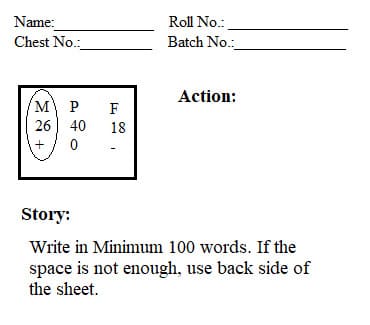
- A Picture will be projected on the screen – it may be blurred or sometimes a clear picture. The picture will be shown for about 30 seconds.
- The candidates have to notice the picture minutely and make a mental note of all details like the number of characters, their age, gender, and the mood they perceive in the picture.
- After 30 seconds, the candidates will be given 1 minute time to note down the details of the picture and characters specific on the sheet given earlier.
- The details about the character –
- All these details have to be marked inside the box printed on the sheet provided by the SSB.
- Mention M if you perceive that character as male, F for female, and P as a person if the gender is not clear from the picture.
- Specify their mood by writing – “+” for positive, “-“ for negative, and “0” for neutral mood and their ages as perceived.
- If there is more than 1 character, then encircle the main character or protagonist/hero of their story.
- On the right side of the sheet, the candidates have to write the Action of the story, which could be in 4-5 words like a “Hiking Expedition”, “NCC Camp”, “Pursuing the dream” etc.
- Total 4 minutes will be given to write a short story that comes to your mind by looking at the picture.
The story should follow a pattern as described below
- Action that led to that situation (past) – preferably in 2-3 sentences
- What is happening in the picture (present) – preferably in 4-5 sentences
- What will be the outcome of that action (future) – preferably in 2-3 sentences
- Once the story writing is complete after the stipulated time, they collect all the sheets from the candidates
- For better management of the candidates, a complete batch of students is divided into a small group of 24 to 30 candidates.
- Each group is called one by one, in the discussion room.
- There are generally 3 assessors evaluating you in the room.
- Based on their chest numbers all candidates will first narrate their story for about 45 sec to 1 min. They might stop you in between while narrating your story. So, everyone has to be alert.
- The discussion among the group will begin as soon as the last candidate of that group finishes his story narration.
- If the group is not able to discuss properly, then the assessors may further divide the group into 2 sub-groups.
- The assessors ask the group to discuss among themselves and come to a common story.
- If the group has reached a common story, then one of the candidates from the group is nominated by the group to narrate their story.
Tips to write a Good Story in a PPDT
- The image shown will be hazy. So, concentrate on only 3 things, – the number of characters, their expression, and the background of the image.
- The background will give an idea about where the story is happening and what will be the plot of the story.
- If there is more than 1 character in the picture, then the first character the candidates see will be the main character of the story. The story should revolve around that character only.
- If there are more characters, then identify only 2-3 characters who look prominent in the picture and weave stories around them.
- First decide the theme or action of the story, as your story will be around that theme or action.
- Before writing the story, prepare a flow of events in your mind – as it becomes easy to then weave your story around the theme.
- The story will be basically divided into 3 parts, as said earlier –
- the past of the picture – which led to that action and explains the background of the main character
- the present of the picture – what is happening and why is that action is happening
- the future of the picture – what will be the outcome of that action and how it will help or make any change
- The story has to be Past Tense and should be short and to the point.
DOs to write the Best Story in a PPDT
- Give attention to the Instruction given by the assessor and always follow them.
- Always adopt a logical order while writing your story as it depicts you have clarity of thoughts.
- Try to give all the basic details of the main character and should represent the candidate’s personality traits
- Try to give a simple theme to the story and avoid a complicated one. Give common names to your characters.
DON’Ts to write the Best Story in a PPDT
- Do not write pre-decided stories that you have seen/read from any source.
- Avoid writing impractical stories – which is impossible to happen in real life. For Example – a single man fights with 10 goons.
- Try to avoid negative, pessimistic, and Anti-Social trends in your story.
- Write a short and crisp story having about 100-120 words.
- If the picture shown has some negative sentiments, try writing some positive aspects of that picture, but do not unnecessarily make the positive story of a negative-themed picture.
- Avoid overwriting or cutting while writing your story.
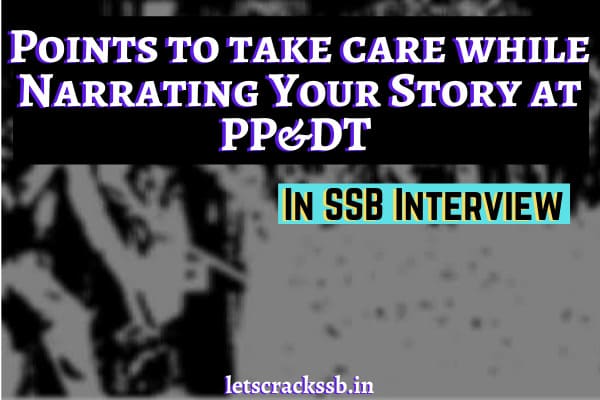
Points to take care of while narrating your story
- In PPDT the main question is not about “how you write the best PPDT story”, but assessors also check how confidentially you have narrated the story and how actively and logically you are discussing during the discussion part.
- Thus, with a good story, we also need to be good at narrating and discussing the story.
- We get only 1 minute to narrate our story. Sometimes, they stop the candidate between their narrations.
- The candidate doesn’t have to by heart their story line by line.
- As 1 minute time is very short, the candidate should speak in such a manner that they cover at least the summary of the story in that stipulated time.
- Good narration implies that the candidate has the power of expression. So, it is very important to speak fluently with constant pitch without stammering and shuttering.
- Based on the instruction received, begin your narration by describing the number of characters you saw, their gender, age, and mood. Give details of the main character along with his personality traits.
- Try practicing your speech standing in front of the mirror, which will give you points to improve your speech.
- Language is not important while narrating your story if you are confident narrating your story. While narrating, if you get stuck while speaking in English, you can continue speaking in Hindi, but return to English as soon as possible.
DOs for Best Narration of Story
- The candidate’s voice should be clear and audible to all.
- Confidence is the main point while narrating your story. Confidence and be achieved through practice only. So, Practice, Practice, and Practice.
- You should have a confident look and sturdy body language while narrating your story.
- The candidate should be loud and clear while narrating.
- A smile on the face while narrating adds to being confident.
- While speaking, the candidate should make eye contact with the group members.
- Never miss the greeting while narration your story. The candidate should Start narration with a “Good Morning/Good Afternoon” and end the narration with “Thank-you” and a smile on their face.
DON’Ts for Best Narration of Story
- Be short and to the point during Narration
- Try to listen to everyone’s story. This will help you in the discussion of the story.
- Never look at the assessor while narrating the story. The Candidate has to address the group.
Points to keep in Mind while Discussing your Story
- Discussion of the story starts immediately after the last candidate completes the story.
- If the assessor has been instructed to start the discussion automatically after the last candidate ends his narration, then try to speak as soon as possible as they finish.
- If you missed starting the discussion, then try to be the first few to join the discussion.
- While making your point or listening to others, always make eye contact with all the group members.
- Always support each other ideas and points. You can always give suggestions to improve their idea.
DOs for Discussion of Story
- Be polite while declining other ideas or points, if you don’t agree with the same.
- Try to combine the ideas of everyone and form a common theme of story among the group.
- Try to convince everyone to come to a common story, if be the one who tries to coordinate among the group.
- In a situation, where the discussion has reached the limits of chaos, then try to calm the group once or twice. If the members do not listen, then remain quiet in such a situation.
- If one of the candidates is not allowing anyone to speak, then you may politely ask him to add some point from your side.
DON’Ts for Discussion of Story
- Never look at the assessor while discussing, as you are discussing among the group.
- Never lose your cool, if no one is allowing you to speak. Wait for your turn or politely ask to add some points to the discussion.
- Avoid speaking when the discussion turns in a fish market, as it may increase the chaos and the complete batch might get washout.
- Be active in the discussion by listening to others’ comments and giving your feedback. Don’t be the lone speaker and give others a fair chance to speak.
Sample PPDT
Suppose the picture shown on the screen is below
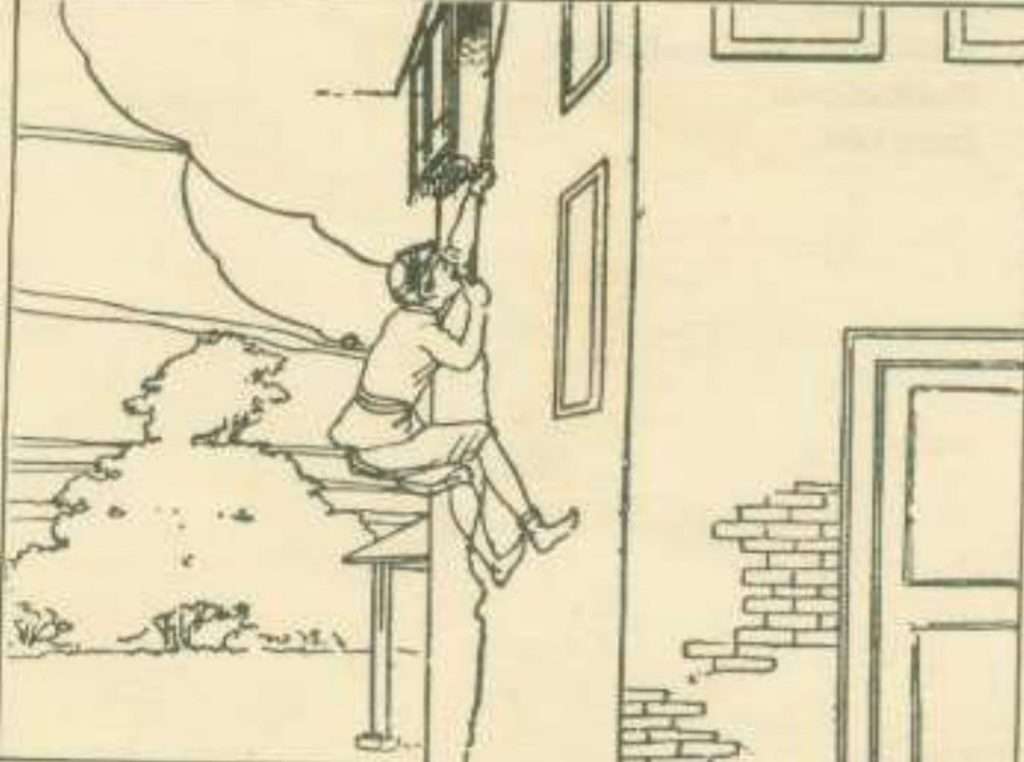
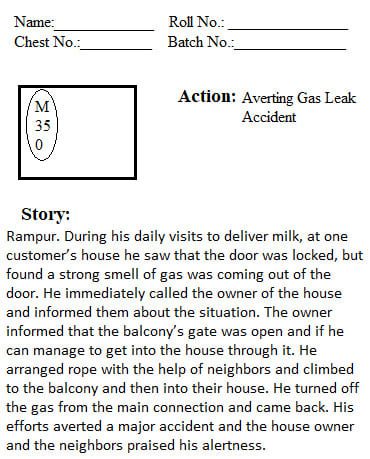
Story
Rohan was a 28 years old milkman who lived in Rampur. During his daily visits to deliver milk, at one customer’s house he saw that the door was locked, but found a strong smell of gas was coming out of the door. He immediately called the owner of the house and informed them about the situation. The owner informed that the balcony’s gate was open and if he can manage to get into the house through it. He arranged rope with the help of neighbors and climbed to the balcony and then into their house. He turned off the gas from the main connection and came back. His efforts averted a major accident and the house owner and the neighbors praised his alertness.
Practice Time
Below are sample pictures for your practice,
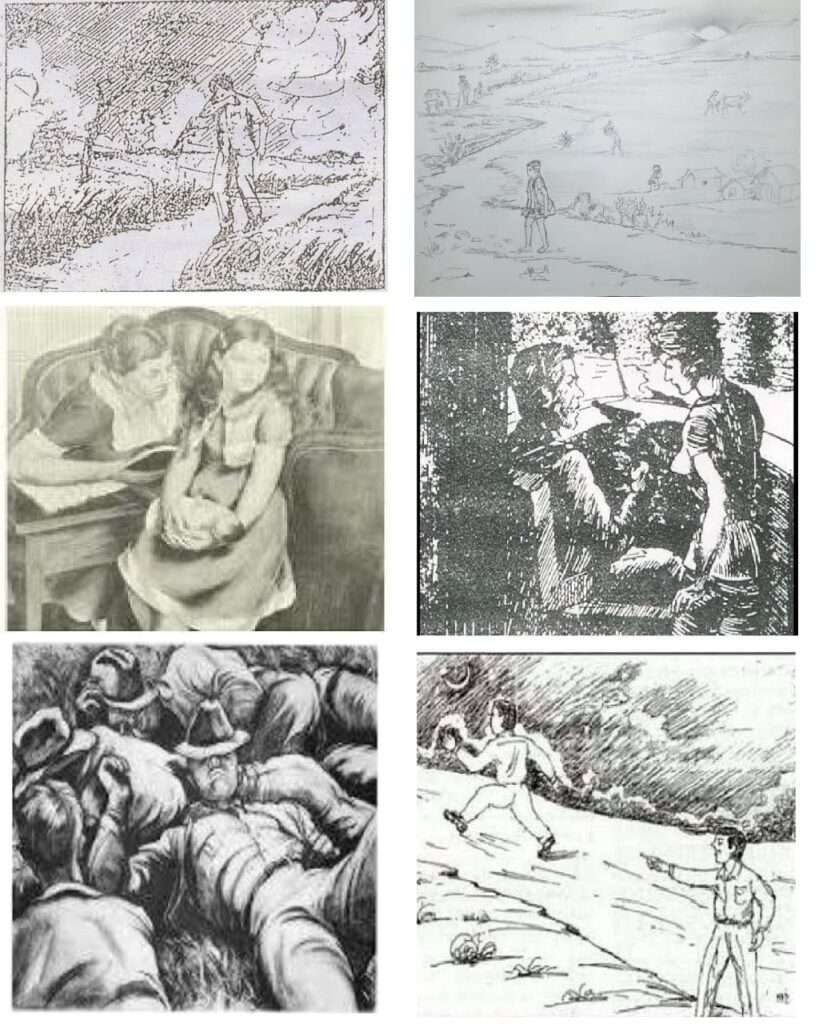
Hope the article would have given you a clear picture of the Picture Perception and Description Test and some tips for the question ” How to write the best PPDT story in SSB Interview “.
For any further queries, clarification or questions, do comment.
Jai Hind..!

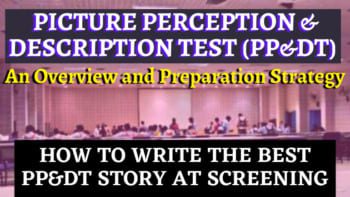

this points are so helpful for me thank you….
helpful, thankyou.
also, it would be great if you add some samples paper with a timer.
THANK YOU , THE INFORMATION YOU PROVIDED IN THE SITE WAS VERY USEFULL THANK YOU.